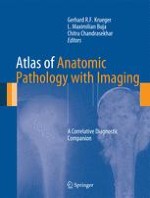Abstract
The prime task of anatomic pathology (autopsy pathology and surgical pathology) is to identify structural (morphologic) abnormalities—both gross and microscopic—to relate these to functional disturbances and thus to identify diseases or disease combinations (“syndromes”). The requirement for such a “functional morphology” is a solid knowledge of the normal anatomy of organs and tissues, as well as physiologic and biochemical reaction patterns and their alterations in disease. The following basic principles need to be considered in anatomic pathology: (a) The development of morphologic lesions (i.e., “morphogenesis”) is time and dose dependent; that is, physiologic and chemical alterations require a certain duration and intensity to produce visible changes. (b) Morphologic lesions are most typical at the center of the pathologic insult, with less typical changes toward the periphery; in addition, secondary reactions (e.g., inflammation) may add to the picture of alterations in the periphery. However, if the central lesion consists of tissue necrosis (death of tissue), only the combination of central and peripheral lesions may allow the correct diagnosis. (c) Despite the large number of various pathogenic insults, the living organism has only a limited number of basic morphologic patterns in use to react to or fend off an insult. Such patterns consist of dystrophy and atrophy, apoptosis and necrosis, inflammation and immune reactions, hypertrophy and hyperplasia, and dysplasia, atypia, and neoplasia. To reach the final and conclusive diagnosis of a patient’s ailment, any pathologic findings must be interpreted in the context of other physical and biochemical data (i.e., “clinicopathologic correlation”).

